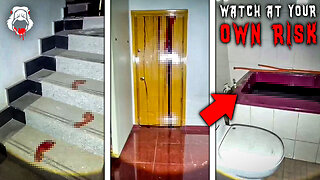Premium Only Content

Teach ANY dog to walk nice on the leash | 5 MINUTE DOG TRAINING RESULTS!
Teaching your dog to walk nicely on a leash in just five minutes may be challenging, but you can certainly make significant progress in a short amount of time. Keep in mind that every dog is unique, and some may require more time and patience to fully master leash walking. Here's a quick training guide to help you achieve better leash manners with your dog:
Materials Needed:
A leash (a regular leash or a no-pull harness may be helpful)
Treats or rewards that your dog enjoys
A quiet, distraction-free environment for training
Step 1: Pre-training Preparation
Before you begin, make sure your dog is comfortable wearing a leash and collar or harness. Practice putting these on and off your dog without any tension on the leash.
Step 2: Positive Association
Associate the leash with positive experiences. Let your dog sniff and explore the leash while offering treats and praise. This helps your dog build a positive association with the leash.
Step 3: Start Indoors
Begin training indoors or in a quiet, familiar space with minimal distractions. Attach the leash to your dog's collar or harness and stand still. Hold the leash loosely and wait for your dog to stop pulling. As soon as they do, reward and praise them. Use a clicker or a consistent verbal cue like "Yes!" to mark the behavior.
Step 4: Walk Forward
When your dog has stopped pulling, take a small step forward. If your dog stays by your side, reward and praise them. If they start to pull again, stop walking and wait for them to release the tension on the leash.
Step 5: Consistency is Key
Repeat these steps consistently, rewarding your dog for walking without pulling. Keep training sessions short and positive, no longer than 5-10 minutes initially.
Step 6: Practice
Gradually increase the duration of your walks and add more distractions as your dog improves. Practice in different environments to generalize the behavior.
Tips:
Use high-value treats that your dog loves to motivate them.
Stay patient and calm during training. Avoid pulling or yanking on the leash, as this can make the problem worse.
If your dog continues to pull, consider using a no-pull harness or head halter to make walks more manageable.
Consistency is key. Reinforce good behavior every time you go for a walk.
Remember that leash training is an ongoing process. Some dogs may progress quickly, while others may take more time. Be patient, and focus on creating a positive and enjoyable experience for both you and your dog during walks
-
 56:45
56:45
VSiNLive
4 hours ago $4.12 earnedFollow the Money with Mitch Moss & Pauly Howard | Hour 1
40.6K2 -
 52:44
52:44
Candace Show Podcast
4 hours agoMy Conversation with Only Fans Model Lilly Phillips | Candace Ep 122
49.8K216 -
 UPCOMING
UPCOMING
tacetmort3m
4 hours ago🔴 LIVE - RELIC HUNTING CONTINUES - INDIANA JONES AND THE GREAT CIRCLE - PART 5
23.1K -
 26:52
26:52
Silver Dragons
3 hours agoCoin Appraisal GONE WRONG - Can I Finally Fool the Coin Experts?
17.2K2 -
 UPCOMING
UPCOMING
Bare Knuckle Fighting Championship
9 hours agoBKFC on DAZN HOLLYWOOD WARREN vs RICHMAN WEIGH IN
11.3K -
 LIVE
LIVE
StoneMountain64
7 hours agoNew PISTOL meta is here?
245 watching -
 20:58
20:58
Goose Pimples
9 hours ago7 Ghost Videos SO SCARY You’ll Want a Priest on Speed Dial
12.5K3 -
 2:24:59
2:24:59
The Nerd Realm
7 hours ago $2.28 earnedHollow Knight Voidheart Edition #09 | Nerd Realm Playthrough
31K2 -
 1:21:14
1:21:14
Awaken With JP
8 hours agoDrones are for Dummies - LIES Ep 70
111K53 -
 1:47:29
1:47:29
vivafrei
6 hours agoJustin Trudeau Regime ON THE VERGE OF COLLAPSE! And Some More Fun Law Stuffs! Viva Frei
85.4K61